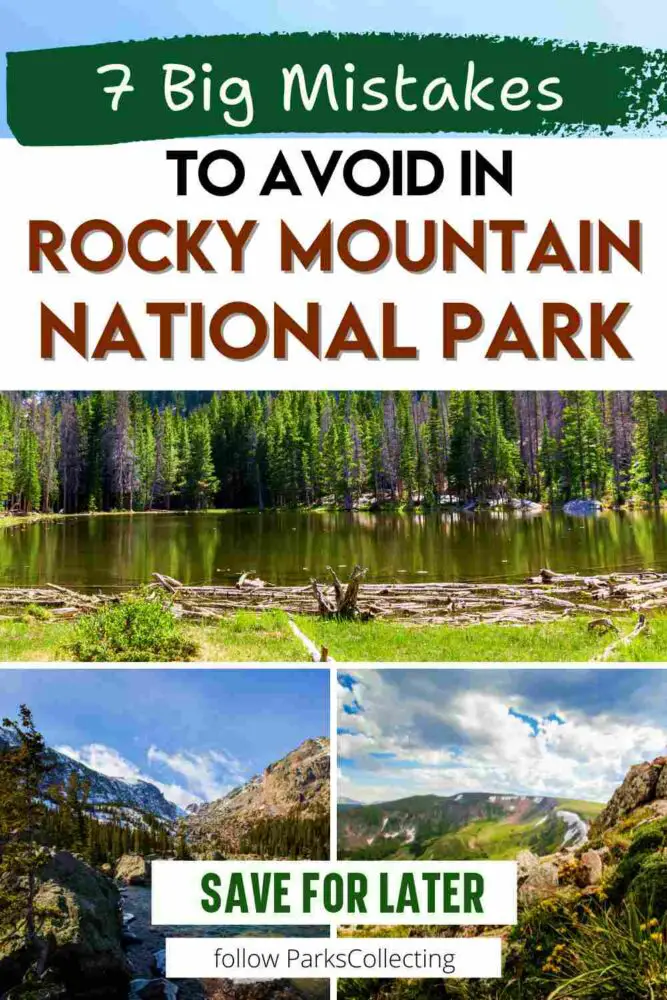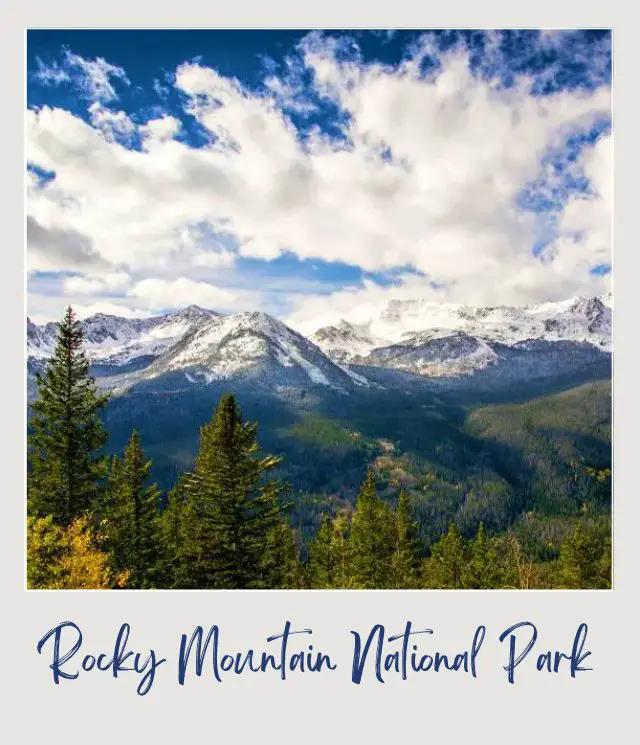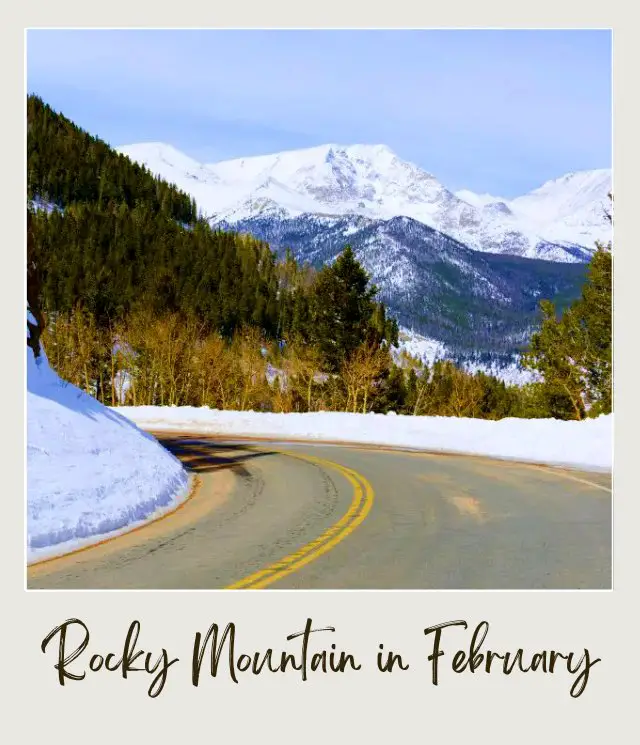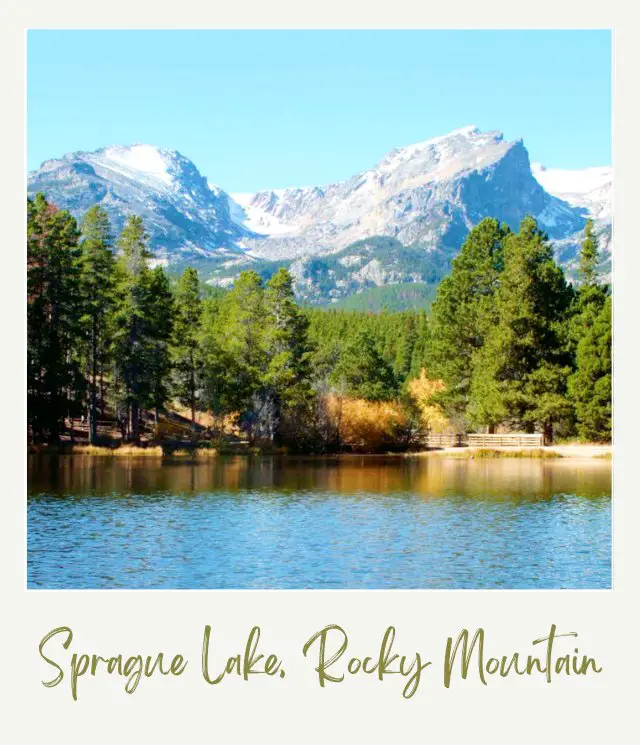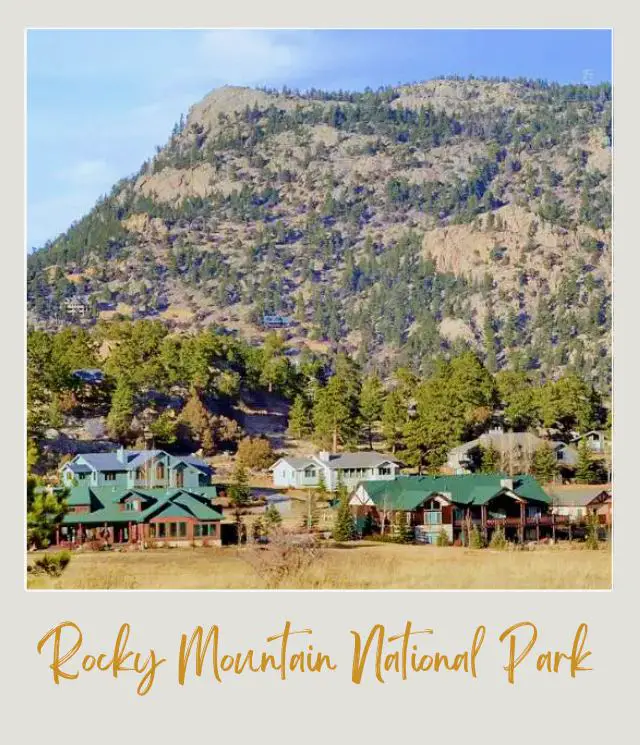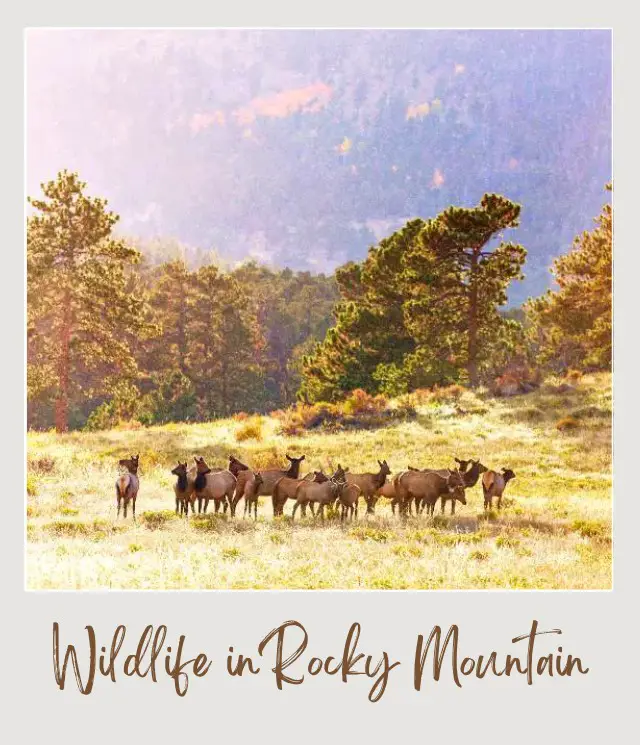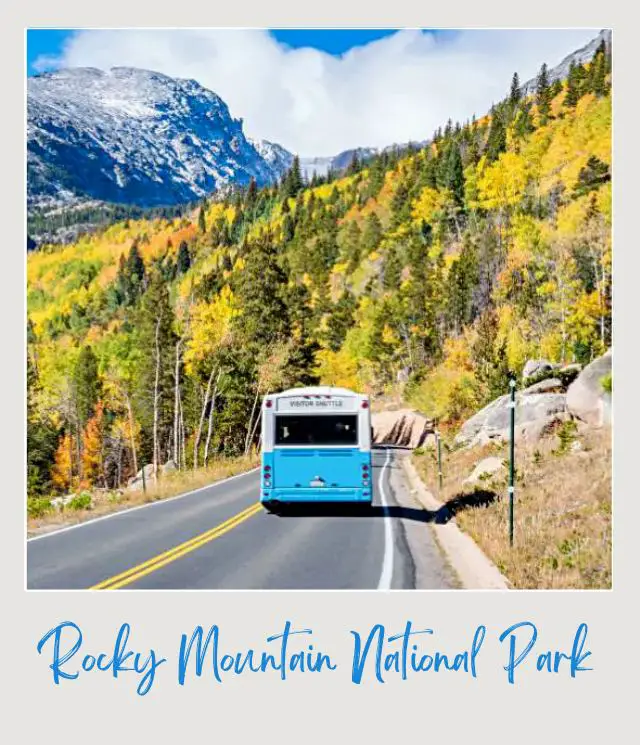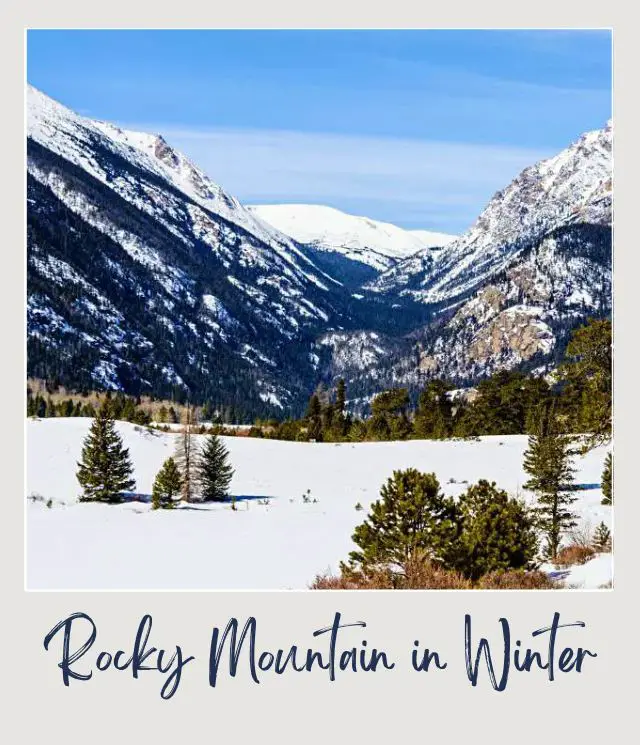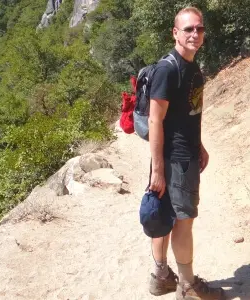There is plenty of information around about how to plan a trip to Rocky Mountain National Park. For all sorts of information about the park, check out my Rocky Mountain National Park Guides.
The thing is that most of it focuses on what you should do when you visit Rocky Mountain National Park.
This guide is different. I will share with you what you should AVOID doing when you plan a Rocky Mountain trip. Hopefully this way you’ll be fully prepared when visiting Rocky Mountain National Park.
I’m a national park expert and have extensive knowledge of Rocky Mountain National Park. I’ve seen many people make mistakes (and I’ll admit I made a few myself!) that have impacted their trip. So now I’m happy to share what I’ve learned from their (and my) experiences so that you can avoid these common pitfalls.
Let’s take a look at the biggest mistakes to avoid when planning a trip to Rocky Mountain National Park.
No time right now to discover 7 mistakes to avoid when planning a Rocky Mountain National Park vacation? Pin It and save it for later:
#1 Not getting timed entry reservations
When planning Rocky Mountain vacations, the biggest mistake I see people make is not getting timed entry reservations for Rocky Mountain National Park.
Due to the park’s immense popularity and efforts to preserve its natural beauty, the National Park Service has implemented a timed entry system to manage visitor numbers and reduce congestion.
➡️ LEARN MORE: Guide to the Rocky Mountain Timed Entry System
Failing to book a reservation can mean being turned away at the entrance. The reservation system is designed to make everyone’s experience in the park better by ensuring that the park’s trails, facilities, and wildlife habitats are not overwhelmed by crowds. This is especially important during peak seasons when the park sees the highest number of tourists.
To avoid this common mistake, plan ahead and book your timed entry reservation well in advance of your trip.
#2 Forgetting to check road conditions
The iconic Trail Ridge Road, which crosses from one side of the national park to the other, is famous for being the highest continuous paved road in the United States. However, due to its elevation, reaching over 12,000 feet, the road is susceptible to sudden and severe weather changes that can lead to unexpected closures, even during the summer months.
So, an important part of planning Rocky Mountain National Park vacations is checking the road status before you leave. The National Park Service frequently updates road conditions, providing visitors with the most accurate and up-to-date information.
Neglecting to verify the status of Trail Ridge Road and other park roads can lead to significant detours or cancellations of planned activities. By staying informed, you can make necessary adjustments to your travel plans, ensuring a safe and enjoyable visit to Rocky Mountain National Park.
#3 Planning to see too much in one day
A mistake I see a lot of first time visitors to Rocky Mountain National Park make is trying to cover too much ground in a single day.
The park’s size and the diversity of its landscapes can lead to an overly ambitious itinerary, which often results in a rushed and less fulfilling experience. With over 415 square miles of natural beauty, including hundreds of miles of trails, numerous lakes, wildlife, and the Continental Divide, it’s important to prioritize quality over quantity.
➡️ READ MORE: Best Hikes in Rocky Mountain National Park
Instead of trying to cram every highlight into one day, focus on planning a realistic itinerary that targets a few specific areas of interest. Allow yourself time to explore each destination thoroughly and at a leisurely pace. Consider factors such as the length and difficulty of trails, elevation changes, and time for rest breaks and meals.
#4 Not booking accommodations well in advance
Another really important mistake to avoid when planning a visit to Rocky Mountain National Park is not booking your accommodations well before your trip. The park ‘is very popular (read: crowded), especially during the peak seasons of summer and fall when the weather is great and the foliage is at its most spectacular.
Lodging options in and around the park, including hotels, cabins, and campgrounds, tend to be booked up months in advance. Waiting until the last minute can leave you with limited and potentially less desirable choices, or even worse, with nowhere to stay at all.
To ensure you have a comfortable place to rest after a day of exploring the park’s majestic peaks and tranquil valleys, make your accommodation reservations as early as possible. Whether you’re looking for a cozy campground spot under the stars or a comfortable hotel room with modern amenities, booking ahead is essential.
READ MORE:
➡️ The best vacation rentals near Estes Park
➡️ The best cabins near Estes Park
#5 Not being wildlife aware
Rocky Mountain National Park is home to loads of animals, including elk, mule deer, bighorn sheep, moose, mountain lions, and black bears.
Seeing them is exciting and it can be tempting to get close for a photo, but it’s important to remember that while these animals are a magnificent sight, they are wild and unpredictable. Approaching, feeding, or interacting with wildlife not only disrupts their natural behaviors but also poses significant risks to both the animals and visitors. Approaching wildlife is not only dangerous, but it’s also illegal and can result in hefty fines.
For your safety and the protection of wildlife, maintain a safe distance at all times. The National Park Service advises keeping at least 120 feet (36 meters), or about three bus lengths away from predators like black bears and mountain lions. For elk, moose, and other large mammals, a minimum distance of 75 feet, or about two bus lengths, is recommended.
I recommend a good pair of binoculars or a spotting scope so you can see the animals clearly while maintaining a safe distance.
➡️ If you’re looking to buy some, check out my Guide To Buying The Best Binoculars For The Money or my Guide to The Best Spotting Scopes for Wildlife Viewing
#6 Failing to consider shuttle options
A lot of people either don’t know about, or overlook, the park’s shuttle system.
In peak season, parking at popular trailheads can be a nightmare, even with the timed entry system. This often leads to frustration and wasted time as visitors circle parking lots looking for a spot.
To alleviate this issue, the park offers a convenient and efficient shuttle service that transports you to various trailheads and points of interest within the park. Utilizing this service can save you the hassle of finding parking, reduce traffic congestion on the roads, and help minimize the environmental impact on the environment.
The shuttle service typically operates from late May through early October, aligning with the busiest times in the park. It is a free service, starting from the Estes Park Visitor Center and other locations, making it an economical and eco-friendly choice for getting around.
Before your visit, check the park’s official website for shuttle routes, schedules, and any updates or changes to the service.
#7 Only going in summer
While summer may be the most popular time to visit Rocky Mountain National Park, limiting your visits to this season means missing out on the unique beauty and activities that the park offers in winter. The snowy landscape is peaceful and picturesque, offering a completely different experience to the busy summer months.
Winter in the park is a wonderland for outdoor enthusiasts, with opportunities for snowshoeing, cross-country skiing on trails like those around Bear Lake, and enjoying the quiet beauty of the snow-covered mountains. The park’s lower elevations often have accessible trails for winter hiking, and wildlife viewing can be even more spectacular against the stark white backdrop.
Winter visits also come with fewer crowds, allowing for a more serene and intimate connection with nature. The park’s iconic landscapes, such as the frozen Dream Lake or the snow-covered trees of the subalpine forests, are a photographer’s dream.
A word of caution: before planning a winter trip, it’s important to check the park’s website for road closures and conditions. Always be prepared with appropriate winter gear, and consider hiring a guide or joining a ranger-led program if you’re unfamiliar with winter outdoor activities.
➡️ READ MORE: 20 Things To Do In Rocky Mountain National Park In Winter
Travel Insurance
You should, of course, always have travel insurance, but especially when doing things like hiking. You just never know. Travel insurance also covers things like lost or stolen property, trip cancellation, and emergency repatriation. If you want to learn more about all this, check out my Guide to Buying Travel Insurance (on my other blog) before getting your insurance.
➡️ A great insurance option is Travelex. It has coverage for all you’ll need. You can compare Travel Insurance plans here or get a quote right now:

Enjoy your trip to Rocky Mountain National Park!
More Planning Resources for Rocky Mountain National Park
⭐ Rocky Mountain National Park Guide
⭐ 10 Tips For Visiting Rocky Mountain National Park
⭐ Guide to Rocky Mountain National Park Timed Entry
⭐ 20 Best Things To Do In Rocky Mountain National Park In Winter
⭐ Best Hikes in Rocky Mountain National Park
⭐ How to Get to Rocky Mountain National Park
⭐ The Airports Near Rocky Mountain National Park
⭐ Closest Airport to Rocky Mountain National Park
⭐ Best Time to Visit Rocky Mountain National Park
⭐ Visiting Rocky Mountain National Park: What To Expect Throughout the Year
⭐ 10 Fun Facts About Rocky Mountain National Park
⭐ The Best Vacation Rentals in Estes Park
⭐ The Best Estes Park Cabins
Do you have any Rocky Mountain National Park tips for planning a trip? I’d love to hear about them. Join my private Facebook group National Parks Collectors and comment and let me know (you can also pick up extra planning tips, share your photos and stories with other national park lovers and more).
If you liked this Rocky Mountain National Park travel guide, Pin It to your Rocky Mountain National Park board!
James Ian is a national park, camping and hiking expert.
He has dedicated his life to travel, visiting more than 80 countries, all 7 continents and most of the national parks in the United States. With over 35 years experience in the travel industry, James has worked on cruise ships, at resorts and hotels, and as a travel planner who’s helped hundreds of people plan successful trips to US national parks.
Based on his experience visiting our national parks multiple times, in-depth research and expertise as a travel planner, James has published detailed itineraries for many of the major national parks in the US. These itineraries, as well as in-depth park guides, and other resources will help you have your own incredible trip to US national parks without stress and hassle.
As a national park expert, James has contributed to many publications, including USA Today, Newsweek, Time Business News, Savoteur, Best Trip, and Wired.
Read more…
I’m a member of the Amazon Services LLC Associates Program. As an Amazon Associate I earn from qualifying purchases.

